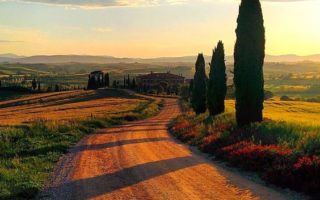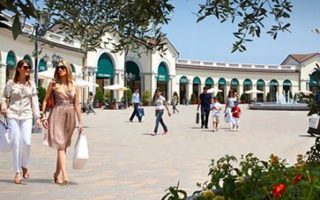The Best Medieval Towns In Italy
Most of these M’s give us great wine! Montepulciano, Montefalco and Montalcino, as examples.
What was it like in medieval Italy?
Medieval Italy saw the birth of many important poets and writers, and became the cradle of Western art. In 1321, Dante Alighieri, delighted the world with his Divine Comedy, which formed the basis of literature in modern Italian.
An artistic revolution began, as artists started to depict matters that weren’t only Biblical. With landscapes, floral designs, and the everyday life of common people becoming focal points for new works, as well as many medieval masterpieces still portraying biblical scenes.
Most people lived in small wood houses with no healthcare, 10 people in the same room, doing the same thing every day: farming.Except for a very limited number of people that had political privileges, like kings, dukes, etc, all the rest of the population could die v easily from the flu.
Italy was also divided into lots of mini countries, in war between each other and Italian as a language was not standard at all (until Dante).
From the 1200’s on, things started getting better for a number of people due to the rise of trade. And, the North of Italy was starting commercial traffics with other mediterranean powers.
Why the abundance of walled towns?
13th century Tuscany was the focal point for political and economic growth, and on it’s way to becoming one of the most powerful places in Western Europe.
After the fall of the Western Roman Empire the region went under the Ostrogoth and Byzantine dominations, before the Lombard conquest in 569. Tuscany was made a Duchy, its seat in Lucca. After the destruction of the Lombard kingdom by Charlagne, it became a county first, and then a march. In the 11th century the marquisate went to the Attoni family from Canossa, who also held Modena, Reggio Emilia and Mantua. Matilda of Canossa was their most famous member.
In this period Tuscany acquired many castles, abbeys and monasteries. Florence, Siena and Pisa were all in competition with one another to be the more powerful.
Not to be outdone by one another, the different towns began constructing massive buildings out of civic pride. This meant that the Middle ages saw a boom of art and architectural commissions. which now gives us all the more architecture to explore.
Montepulciano, a medieval Tuscan village, ticks all the boxes,with great wine, castle walls, delicious menus and thermal springs. It has been producing wine since Etruscan times. The local wine, Vino Nobile di Montepulciano, is one of Italy’s classic red wines, and is partly why Tuscany has made it’s mark on the world wine map.
Italian poet Francesco Redi described it as “the king of all wines” in his poem Bacco in Toscana (Bacchus in Tuscany). You may experience deja vu in Montepulciano’s main square, because the Twilight sequel ‘New Moon’ was filmed there. It has a fountain which boasts the Medici family symbol of a lion, with manymedieval and Renaissance buildings to spoil you for choice. The Duomo, the Palazzo Comunale, the Palazzo Tarugi and the Palazzo Contucci. Big enough to spend more than a day, why not let us tailor make your romantic Tuscan weekend here.
 |
| Photo credit: Julia Kostecka |
Montefalco, the most beautiful, well maintained, tucked away delight of all the towns mentioned. This town has one main square which is paved with a falcon, because Montefalco means Falcon Hill. Wine wise, Montefalco’s vineyards date back to the 11th century and Pliny the Elder talks about the wine of Montefalco, although it’s famous Sagrantino grape can only be traced back to the 1800s.
It is believed that Saint Francis of Assisi bought it back with him from the Middle East as a sacramental wine. Whilst the what to see and do list might be less than other towns, that’s what makes it special in a way. With more time to relax at the Bondatosi Palace Hotel and eat at the Alchemista restaurant in the main square. Did we mention that Montefalco makes some of the country’s finest cottons and linens? They don’t call this town the Balcony of Umbria for nothing. The views, ah the views.

Montalcino puts the M in medieval. It’s walls are high and mighty, and built in 1361 to mark the passage of Montalcino under the domination of Siena. With medieval towns and delicious local wine being the winning combination, we must talk about their renowned wine Brunello di Montalcino.
A red, produced exclusively in Montalcino and one of Italy’s most famous wines. According to DOCG regulations, Brunello wines cannot be commercialized before five years, since production, (6 years for the Riserva wine). During this long period, the wine must remain for at least two years in wooden barrels and undergo a minimum of four months of refinement when bottled. Montalcino is in between the Val d’Orcia Natural Park and the Maremma part of Tuscany, which is about the best of both worlds as it gets.
Talking of the Maremma, Pittigliano is a great option to meander around medieval lanes on a weekend, and the 13th century Palazzo Orsini doesn’t disappoint. Rich in both Etruscan and medieval history, it is also known for it’s Jewish culture, so there is a Jewish museum, a synagogue, and a bakery. Try the local dolce (sweet), a stick of sfratto, a delicious sticky mix of honey and walnuts. This would taste even better washed down with a glass of the local Bianco di Pittigliano.
San Gimignano, is a must do. This special hilltop town has a labyrinth of winding alleys and rich cultural history. There’s nowhere like it in the world, and is known as the medieval Manhattan, because of it’s multitude of medieval towers.
After visiting the Duomo and Palazzo della Podesta, walk up to the top of the ancient walls for the best view of Chianti. Grab a table at the Enoteca di Vinorum, for a glass of wine overlooking the Tuscan landscape, after climbing the tallest tower, the Torre Grossa.
Siena, the creme de la creme of medieval towns, maybe even too beautiful for words. Why not a book tour, for a memorable trip of a lifetime. The Piazza del Campo holds the world famous Palio di Siena horse race, and the Duomo boasts works by Donatello and Michelangelo. And then, if there’s any memory left on your camera, the Palazzo Pubblico with 13th Gothic architecture, is a photographer’s dream.
The stripey marble on the facade Duomo is a sight for sore eyes and on a par with the Duomo of Florence. In fact, after Florence, Siena is the next most important town in Tuscany.
Siena is almost a smaller version of Florence. So, if you only had one afternoon, and you wanted to see more of one location, as supposed to only scratching the surface of the other, Siena is ideal.
 |
| Photo credit: fortherock |
Civita di Bagnoregio, If you want a medieval town that’s a lil less touristy, boy have we got one for you. There’s even a drawbridge. Founded by Etruscans 2,500 years ago, Civita di Bagnoregio sits on top of a rocky valley, buffeted by winds and erosion and is mostly deserted. It’s atmosphere is a sort of ghost town secret you stumble on. There’s enough in the way of street cafes and eatieries to keep you busy, but you may just have the whole town to yourself. Where is it? Lazio, 90 km north of Rome and 10 km South of Orvieto.
If you want a town that’s relatively close to Rome and dobale by train, then Viterbo or Orvieto would be perfection options.
Viterbo, Lazio’s best preserved medieval town founded by the Etruscans and eventually taken over by the Romans. Was once upon a time the Papal seat. Which means that you are guaranteed some architectural goodies here. The Papal Palace built in the 13th century, is a great example of Gothic architecture. An imposing palace, with good views from a number of lookout points. If you want to dip and unwind, there are therapeutic hot springs. The most famous being the sulphorous Bulicame pool, mentioned by Dante in his Divine Comedy.
Nemi, bang in the heart of the Castelli Romani hills and a mere 30 minutes drive from Rome, Lake Nemi is a discreet marvel with desirable menus, giving new meaning to the term ‘paint the town red’. It is decorated every May with strawberries for the delicious Fragoline di Bosco festival, now in it’s 83rd year. That is, a celebration of the wild strawberries that grow in the nearby woods. Romans come here to dip their toes in the lake during the humid summer months, famous for its bathing and food. It doesn’t get any more Roman than that! It is home to the Temple of ancient Roman deity Diana. But, their medieval festival is even more reason to go in May, so remember to get there early to be able to park your car, it gets pretty packed.
The best medieval festivals and banquets
Perugia..Calling all chocoholics and jazz fans. This town has some of the best festivals, and there’s action here all year round. Umbria jazz is an institution and is the highlight of Perugia’s annual festivities.
Want to witness medieval fanfare with delicious food at a town not that far from Rome? The area in between Rome and Tuscany is famous for its cuisine reflecting the regions vast woodlands and lakes, foods such as mushrooms, cherries, wild boar, olive oil and wines like Morellino, Montepulciano, Montalcino and Montefiascone, and delicious chestnuts from Soriano nel Cimino. Many popular festivals are held throughout the autumnal harvest season, but there’s much to do and take tours of, all year round.
Monteriggioni Medieval Festival
Everyone is invited to cross the gates at the castle and take part in the Feast at The Castle in July.
The festival is in it’s 26th year and this year, the theme was ‘Arts, Games and the Feasts at the time of Dante’.
Music, dance and medieval crafts and demonstrations of their trades. Blacksmithery, candlemaker, tannery and more.
The Wedding of the Trees in Vetralla
Each May, the Wedding of the Trees festival celebrates the fertile season in Vetralla (only 68 km North of Rome). This dates back centuries and includes a symbolic wedding between two giant oaks decorated with veils. A type of ancient eco festival, if you will. The town band play and drumroll the mayor marrying the two trees.
Dress code: medieval
Nemi Medieval festival
A celebration of Medieval and Roman art and Medieval re-enactments, with a view Castello Ruspoli and the beautiful lake, happening every year in May.
Bagnoregio Woodland Festival
Delish tastings of local woodland produce. The smaller of the festivals, this will be more of a woodland farmers market. Wine, wine, and more wine. Takes place in autumn.
Soriano di Cimino Chesnut Festival & medieval palio
It’s all about chesnuts. Expect street stalls with chesnut everything, chesnut honey, chesnut gelato, risotto with chesnut and chesnut soup. There is a medieval banquet and the greatest thing about this festival is the whole town make medieval shop fronts, so its almost like a movie set. Takes place in October.
Movie to watch about medieval Italy
Brancaleone and Brancaleone alle crociate by Mario Monicelli.
What was on the medieval menu?
Wild game and aromatic and spiced sauces became more frequent and was used to mitigate the flavor and smell of the food. There was no refrigeration, so the food could not be stored for long periods of time. Spices and honey were used to mask the high level or acidity in both food and wine.
Did you know? The word companion in fact, comes from the Latin cum pane, or the sharing of bread.
Want to know more? Why not book a tour with us!
Written by: Nicola Ferlei Brown
If you liked this article, read also “SEVEN INTERESTING THINGS ABOUT ROME YOU PROBABLY DIDN’T KNOW”











